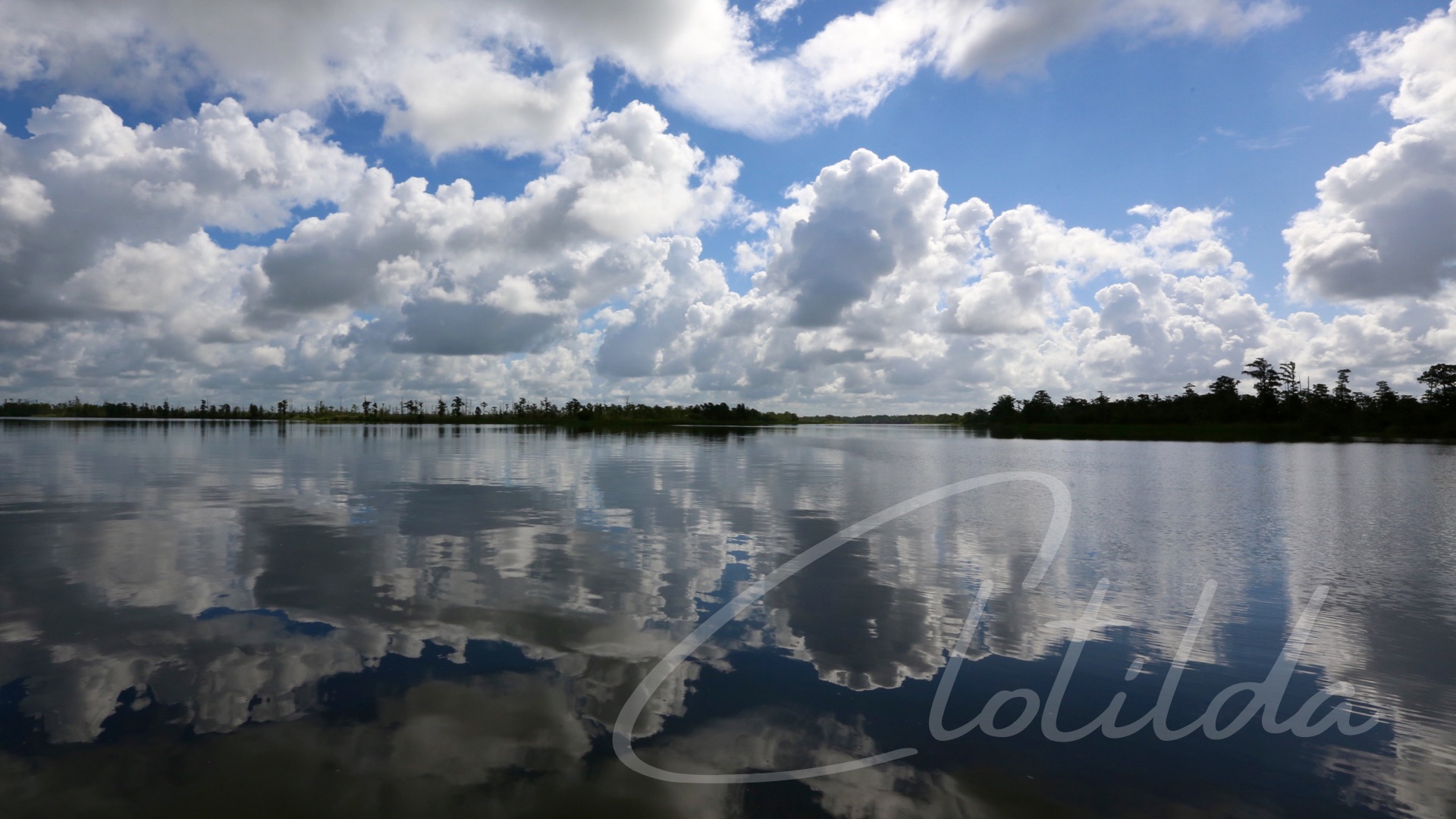
The People of Africatown
The Clotilda was the last slave ship to sail from western Africa to the American South. When slavery ended, the boat’s captives built Africatown, their own self-sustaining community on Mobile Bay. With this week’s release of a new Netflix documentary, their story is about to reach the entire world.
On April 10, 2018, a diver slipped into the murky waters of the river delta north of Mobile, Alabama. Spring floods had stirred the muddy bottom, and the water, he remembered, “looked like chocolate milk.” Even with his scuba mask, Ben Raines was diving blind. Soon, his foot brushed against what felt like a wooden plank, and Raines, a heralded environmental reporter, reached down and began to tug. The plank came loose, and he rose to the surface with a five-foot piece of what turned out to be the Clotilda, the last slave ship to arrive in America.
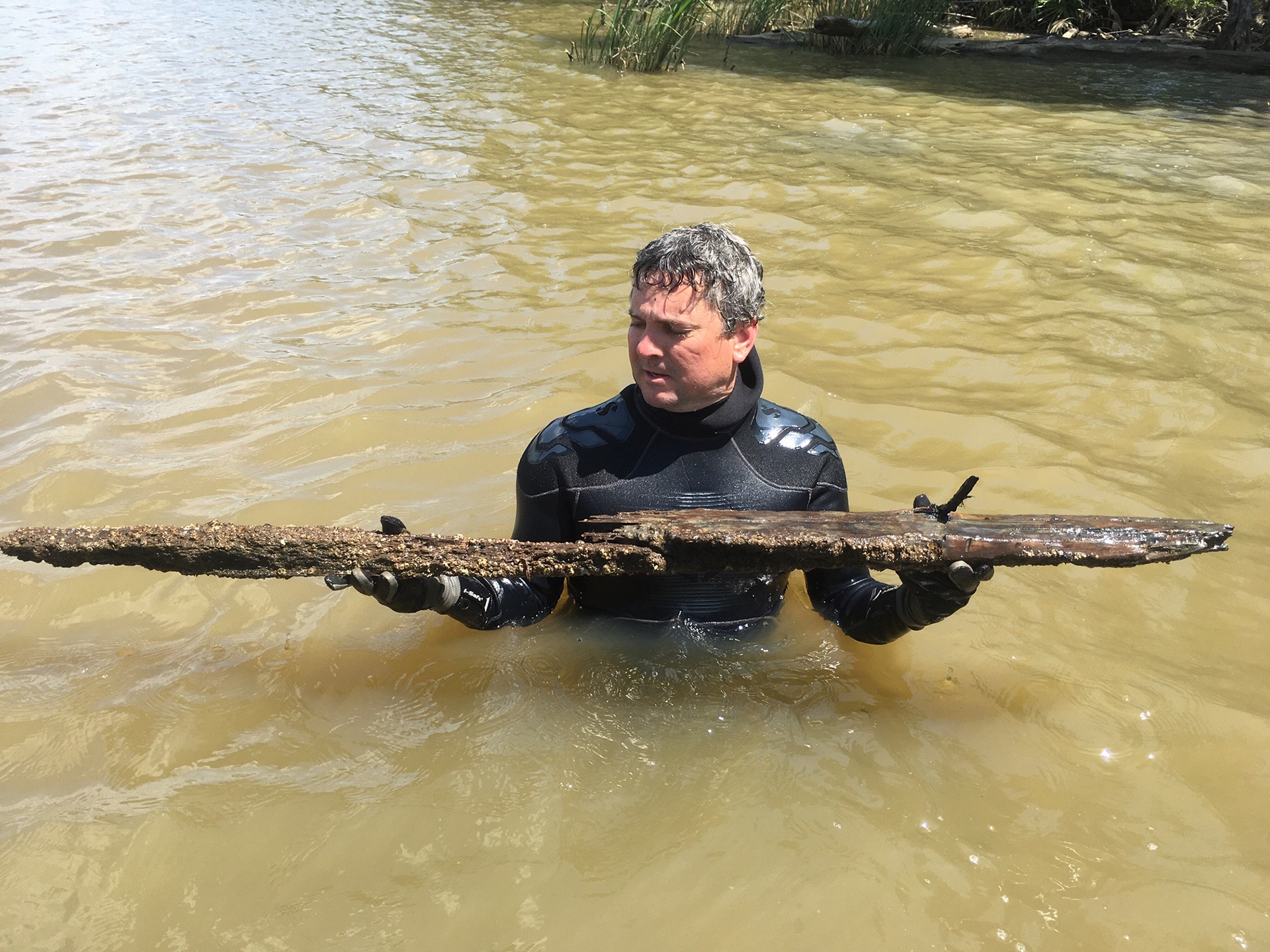
In the wake of that discovery, the story of the ship — and the community built by its captives — has become a source of national fascination. On October 21, the documentary film, “Descendant,” hailed by critics as “fantastically compelling,” will debut on Netflix and in selected theaters, after a successful launch at the Sundance Film Festival. The film, directed by Mobile native Margaret Brown, offers a haunting oral history — the voices of men and women raised on stories, often told in whispers, of bravery and suffering among the Clotilda captives.
The release of the film comes in the wake of visits to Mobile by National Geographic and CBS’s “60 Minutes” and the publication of books by Raines (“The Last Slave Ship”), Harlem Renaissance author Zora Neale Hurston (“Barracoon”), Hampton University scholar Natalie Robertson (“The Slave Ship Clotilda and the Making of Africatown, USA”) and Brown University’s Sylviane Diouf (“Dreams of Africa in Alabama”). This is the history they recount:
In April of 1859, more than 50 years after the United States passed a law banning the importation of slaves, a riverboat captain named Tim Meaher, a pro-slavery zealot, made a bet with some of his passengers that he could successfully defy that law. He commissioned a ship, the Clotilda, captained by William Foster, to sail from Mobile to the slave-exporting Kingdom of Dahomey.
In what is now Benin on the Atlantic coast of Africa, a young man named Kossula was one of the prisoners in a Barracoon, a dungeon for terrorized men and women who awaited their fate. Later, Kossula described for Zora Neale Hurston how the soldiers from Dahomey, many of them women, attacked his village while the people slept, beheading the elders and taking young adults as slaves.
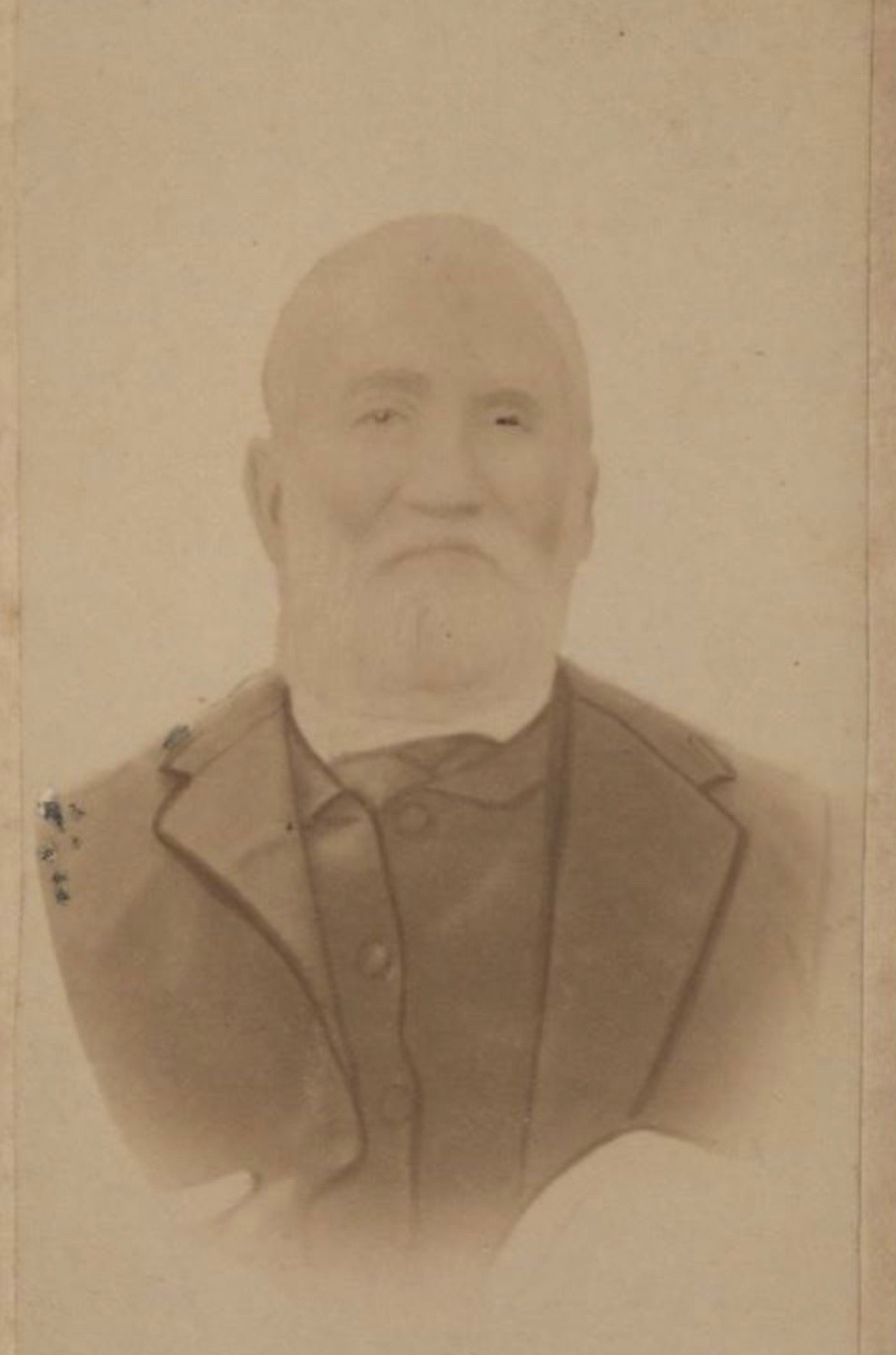
I see de people gitte kill so fast! De old ones dey try run ’way from de house but dey dead by de door, and de women soldiers got dey head. Oh, Lor’! … De soldiers say dey got no ears for cryin’. De king of Dahomey come to hunt slave to sell. So dey tie me in de line wid de rest.
Kossula, soon renamed Cudjo Lewis by his captors, was one of 110 human beings crowded into the hold of the Clotilda, a ship that was barely 90 feet long, and forced to endure the dreaded middle passage. For nearly six years, they worked the fields of coastal plantations, rising before the sun and toiling until after it set.
“But we don’t cry about dat,” said Cudjo. “We cry because we slave.”
Abruptly, however, the Civil War ended, and they were free. Immediately Cudjo and other survivors began to build their own community on the swampy shores of the Mobile River. For a time, Africatown, as it came to be known, became a model of Black aspiration and achievement. In 1880, the freed men and women established classrooms for their children in a church; by 1910, they had purchased and donated land for Mobile County Training School. By the 1920s, Africatown had grown to a community of 1,500, one of the largest in the nation governed by African Americans. Mobile County Training School continued to operate as the only Black public high school through the 1940s and was a center of life in the community. By the 1970s, the population of Africatown had reached 12,000 — “shady streets,” wrote Ben Raines, “… lined with tidy wood-frame and brick houses and home to a vibrant commercial district.”
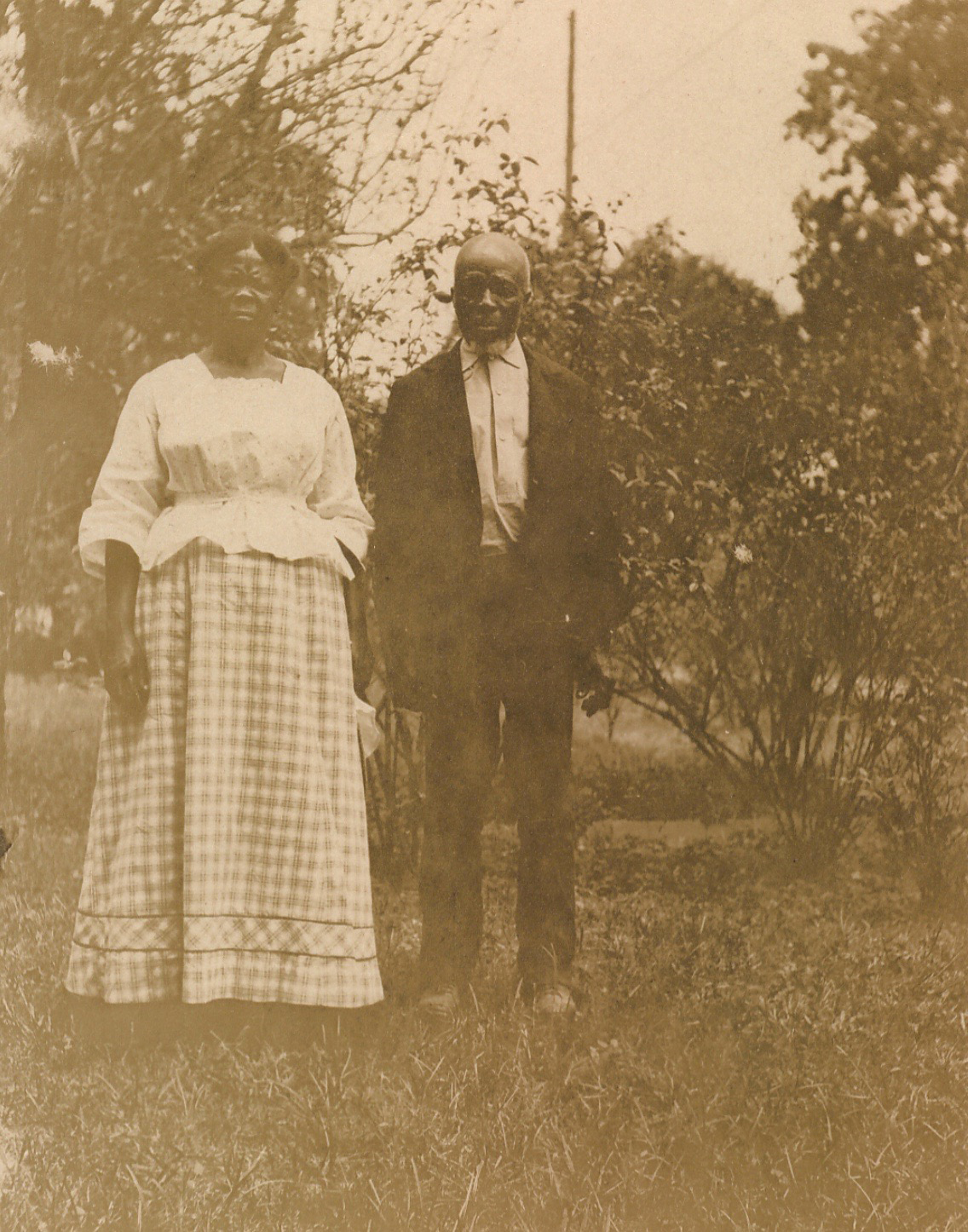
But the community was stalked by forces beyond its control. The Meaher family, whose patriarch Tim Meaher had commissioned the Clotilda, began to lease land to heavy industry — paper mills that belched their ash and toxic chemicals into the air near Africatown. Cancers of multiple kinds began to ravage the community, along with birth defects, liver and kidney damage, and asthma. The population declined, and vacant lots now mar the landscape.
All of this is the story told by descendants in Margaret Brown’s film — a story of suffering and oppression, of white supremacy and indifference, but a story also of perseverance, which seems, if anything, to be growing stronger. With the discovery of the Clotilda, burned and sunk by the Meahers to conceal their crime, there is talk of reclaiming a complicated history and celebrating a legacy of survival.
Here, Alabama journalists Cynthia Tucker and Frye Gaillard speak with three people who have worked to preserve that legacy. Dr. Kern Jackson, an oral historian at the University of South Alabama, conducted many of the interviews that form the backbone of “Descendant.” Joycelyn Davis, born and raised in Africatown, is a community activist who has heard the stories for most of her life, and has committed herself to keeping them alive. Journalist Ben Raines found the ship, guided, improbably, to a critical clue by one of the descendants of Timothy Meaher.
Together, they share their thoughts about Clotilda, the community built by its survivors, and the redemption they hope is yet to come. The interviews have been edited for length and clarity.
DR. KERN JACKSON
Q: Have you been surprised at the success of “Descendant”?
Jackson: No, I have not. I think the storytellers are too sophisticated and powerful for their narratives to be denied a wide audience. It was just a matter of the rest of the community of folks interested in this topic, just finding out about it. And then it sort of took over with, you know, with its own steam. So, I’m not surprised about it at all.
By the 1920s, Africatown had grown to a community of 1,500, one of the largest in the nation governed by African Americans.
Q: How long have you been working to record the history of Africatown?
Jackson: My involvement is strictly due to one of my mentors, my godmother (Valena McCants). She’s 90-something now. She took me to Africatown in ’96 or ’97, and she said, “Okay, you got a Ph.D. Apply it to this.” She had gone to school at County, and she taught there.
She took me to the Lane. She took me through the gates of (what was then) the Stimpson Lumber Yard to get to the neighborhood, to go in the Lane to where all the houses were of the Clotilda descendants. And she stopped, and she gave me a charge, like old people do: “You need to deal with this.”
I had already had some inkling about Lewis Quarters (founded by Clotilda captive Charles Lewis and his descendants) because I had been here in ’91 or ’92 collecting stuff for my dissertation. So, I knew about Lewis Quarters, but I didn’t know its significance. I had found that they were holding their 140-year-old festival at the same time as Mardi Gras. I thought that was fascinating. So, I was in Lewis Quarters, and I ran my camera, and I was fascinated by the genealogical narrative that two of the storytellers were telling. I just put it on a shelf, and I didn’t think about it too much.
(Later), I got hired as the minority history curator at the History Museum of Mobile. When the city was planning its tricentennial celebration, I said, “Why don’t we do the history of some black neighborhoods?” We had a little money from the city, and we hired a couple of students to help. And it just so happened, that’s when I got to hook up with Lorna Woods, who calls herself, in the film, “The Treasure Keeper.” Lorna had been one of Mrs. McCants’s students. She had come out of Lewis Quarters. Those tapes didn’t just sit on a shelf. Those tapes are my contribution to what Sylvian Diouf did with “Dreams of Africa in Alabama” and what Natalie Robertson did.
Q: How did the film’s director, Margaret Brown, get involved?
Jackson: It just so happened I had this relationship with (her). We had had a meeting of the minds over what needed to be said to Mobile when we made that segregated Mardi Gras movie, “The Order of Myths” (2008). So I called her on the phone, and I said, “Get over here and bring a camera. We gotta go to work.” And we have hard conversations. I think they are conversations and dialogue a lot of Black and white people should have and not be afraid to be challenged and pushed back on. And what does that do? It makes the art more textured, more nuanced, more trusted.
Q: How did the idea for the “Descendant” documentary develop?
Jackson: It wasn’t intended to be a documentary. It was supposed to be a series. But, you know, that’s just not (Margaret’s) artistic style. The cinema verité is her gift. So, that is how the genre was chosen. But I wouldn’t say it was our idea, right? I would say that it is the confluence of things that happened going back 80, 90, 100 years. The thing is, my grandmother was a vice-principal out at (Mobile County Training School), so when I was teeny-tiny, I would come to Mobile to visit, and I had gone out to County, to Magazine Point, to Plateau. … So, the elders put things in process. I’m just trying to say, this film, the ancestors had already dreamed it up.
Q: What do you expect the reaction to the film to be from Mobilians?
Jackson: I’m hoping that the local folks will see the Africatown story much differently than perceiving it the way they had the other 150 years previous. I hope they see it as a location of pride, a location of resilience in a community of folks, surrounding (Mobile County Training School). We had a population that was segregated, not by their own intentions, that are able to find resilience and sustainability among themselves. I want the young people, in particular, in Mobile County to see these folks demonstrate what self-advocacy can do, right? What I hope is for the young people to see that democracy, small “d,” is in full effect and it’s operational and it works. This film is an example of a group of folks in Mobile County who have had a modicum of success leveraging the power of their own stories.
Q: What do you hope that Africatown looks like 10 years from now?
Jackson: I hope they have some damn sidewalks. Sidewalks, lights, signage. It’s a historic place. And I hope the speculators don’t snap up all the ground because it’s going to become a tourist attraction. I hope some of the people who are there, like (descendant) Emmett Lewis, benefit. I want Emmett 20 years from now to have a brick-and mortar barbershop in Africatown and not have to cut hair out of his house. A lot of the black people in Africatown still live in the Meahers’ rental houses. That’s fucked up. You brought me over here on a (slave) ship, and now I’m paying you rent! I am in accordance with placing the focus on residents already there, what Joycelyn Davis says in the film, "it not being all about the ship." If the ship is brought up out of the water, it will disintegrate. I advocate for it to be left intact where it is. My hope is that the school is a diasporic academy and that the festival explodes and generates income and not just the city and the state benefit. And some community development regarding quality affordable housing, not gentrified areas such as what happened with the area where the Tulsa Race Riot took place. Black folks there can no longer afford to live where their people died after historical tourism developers meet the demands of a property market that wants to forget the riots were there. I do not want this for Africatown.
Joycelyn Davis
Q: Did you expect the documentary to receive so much acclaim?
Davis: Never in a million years, because I’ve always grown up with the story. You know, it’s been in our Alabama history books. The story has been told in the community. It’s been told in our church, Union Baptist. It’s been told in the family. But for it to go global, and it’s going to go global, that’s just amazing.
Q: Why does the film have global reach?
Davis: It’s sad to say, it’s bittersweet. I think that it’s because of the finding of the ship. But it shouldn’t be because of the finding of the ship because the history has always been there. But it’s just, you know, the archaeological thing with it being the last documented slave ship in U.S. history. And now we have the internet, we have YouTube; we have all these different outlets that we didn’t have in the ’70s and ’80s. So, it’s getting that attention of a lot of people saying, “Well, I didn’t know. I didn’t know.” Margaret and Dr. Jackson, they had a jewel. It’s a jewel.
Q: From which Clotilda captive did you descend?
Davis: Olule. His enslaved name was “Charlie Lewis.” And Maggie Lewis. Both were on the Clotilda, and I always have to mention the women because a lot of people don’t mention the women. And these women were right along with them. Olule married one of his shipmates.
Q: As Africatown was losing population, you stayed. Why?
Davis: People like me are needed. Voices like mine are needed. I just got off the phone with a good friend who is also in the Africatown area, and we’re talking about things like litter. How can we help with litter? I watch kids walk … in litter and overgrown grass. Shame on me (if I don’t say) who can come clean up this litter? Who can come cut this grass? How can we share this history with (other) schools? Just being a voice. There are quite a few of us who are still active in the community. You have those who left and are coming back.
I just did a play (“An Ocean in My Bones”) last year in Africatown, in Mobile County Training School. We brought the story to life in a theatrical way. Some kids might not want to read about it, but if you bring it to them in a different way, they might be interested in it. We (the Clotilda Descendants Association) hired a playwright from Ohio, Terrance Spivey. I reached out to him and said, “Hey, I want to bring this story to life.” He set up auditions. A lot of people who came out were amateurs. It was well-received. Hopefully, it can travel. “To Kill a Mockingbird” is something that people flock to every year (in Monroeville). When people think of Mobile, they think of Mardi Gras, they think of, “Oh, that’s the place with the last known slave ship.” I hope they think, “They have this play.”
Q: Can Africatown prompt a racial reckoning?
Davis: I’m open to that. Just waiting on those to come to the table. I haven’t met my ancestors’ enslavers’ family. It wasn’t just the Meahers. It was the Meahers and their business partners. The Meahers did not enslave (all of them). There were 100-plus, but some individuals were shipped other places. Some went to Selma. So, my ancestor was enslaved by Col. Thomas Buford. And he’s unknown. It wasn’t just the Meahers. No one from present-day Benin has reached out. Someone came here (from Benin) some years ago to do a ceremony at the site and Ben (Raines) was there. Now Mike Foster, who is a cousin to Captain William Foster, I talk to him every other day. I don’t want to give the Meahers all the (blame).
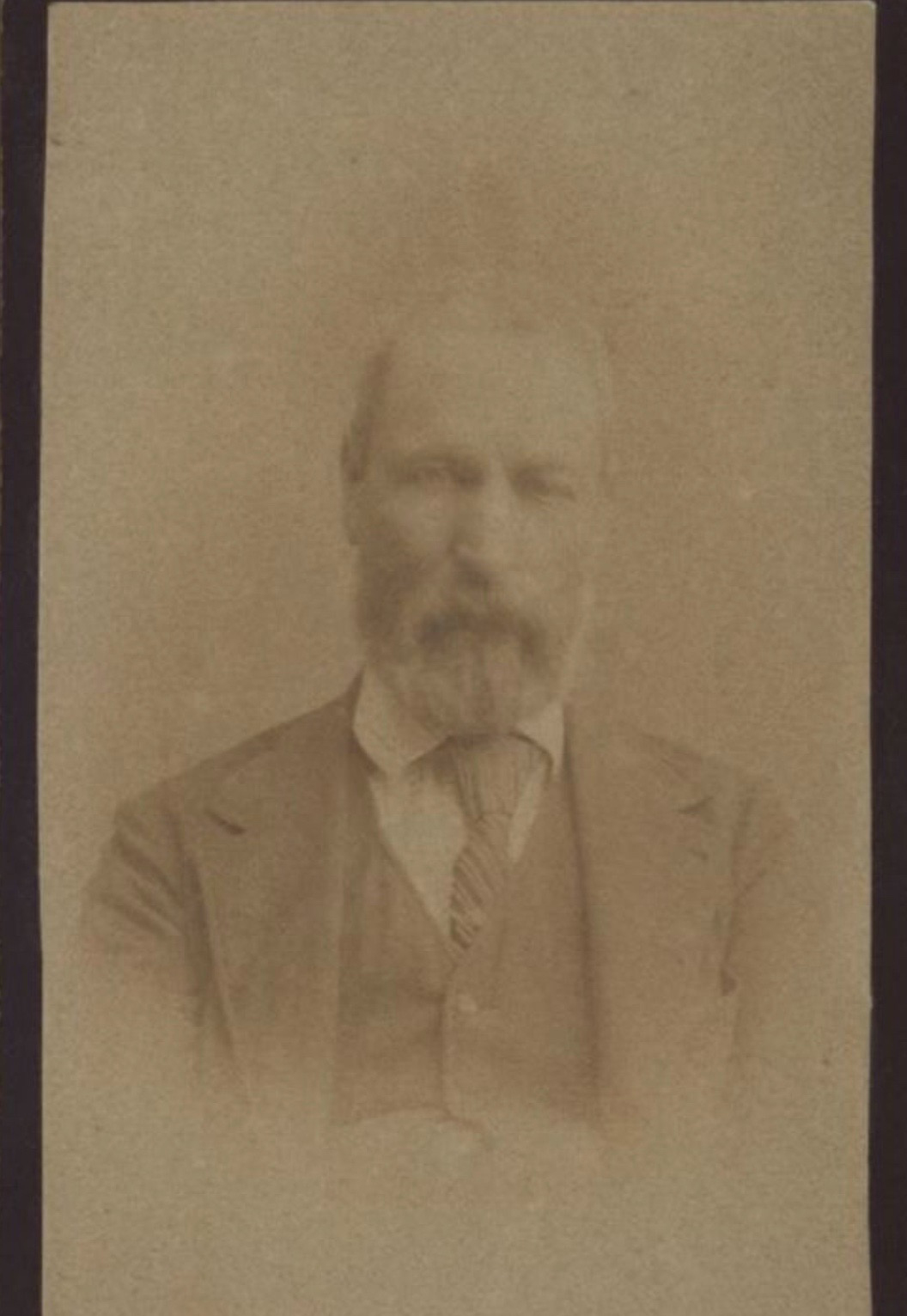
That table needs to be everyone because there were a lot of people involved in that. I know that they (Meahers) have this huge generational wealth. I get that. But there were others involved.
Ben Raines
Q: What made you decide to look for the Clotilda?
Raines: So, you know, I was an investigative reporter in Mobile for 20 years, and I had never thought of looking for the Clotilda, which of course, turned out to be one of the biggest investigations that could have been done in Mobile. So, I got a call one day from Jeff Stewart, who was a former colleague at the newspaper (The Mobile Press Register). He was the outdoor writer. And he called me up and said, “You should go look for the Clotilda.” And I said, “Is it missing?” Because I didn't understand. I just thought it was the last the last slave ship, but I didn't understand the full back story.
So, Jeff gave me the CliffsNotes version on the phone and told me how they had burned it and that had been illegal and all that stuff. (Historian) John Sledge had said on the radio that if we could ever find the Clotilda, that would solve the biggest maritime mystery in American history. And Jeff said, “Look, you’re a charter guide up there in the Delta. You’re up there all the time. So, I think you got a shot.”
We hung up the phone, and the first thing I did was type “Clotilda” into Google and immediately read everything I could find on the internet and then found myself, before I got up, ordering Sylviane Diouf's book and Natalie Robertson's book and historic sketches. I was just totally hooked, you know, the first time I heard the whole story.
The more I read, the more I realized that Timothy Meaher had told different stories in interviews spread over 30 years about where they burned the ship. And so, my first thought was, well, he's definitely not telling the truth in at least one of these interviews because he's naming different places. So, I decided not to trust him.
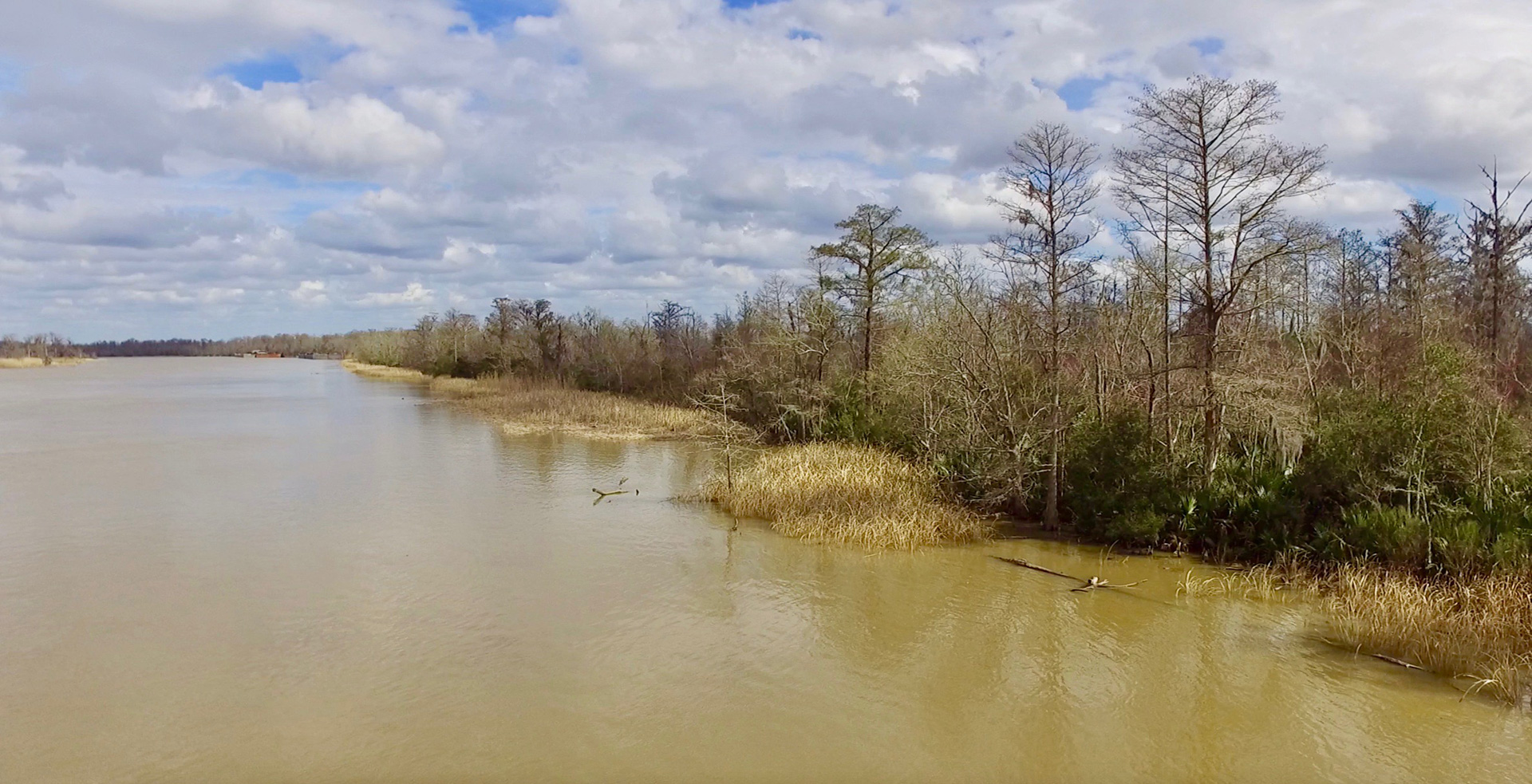
Q: What led you to 12-Mile Island, where you finally found it?
Raines: I knew Robert Meaher a little bit because he had been involved with some environmental stuff that I was involved with, and he was very nice guy, you know. I didn't know he was related to the Clotilda at the time, but when I realized he was a descendant of Timothy Meaher, I called him one day and asked him if he knew where the ship was. He was evasive and would not say. But he did say, “You know, the captain's journal is in the Mobile library, in a collection of the library has, 100 or more items.”
So, I'm reading through the library collection, and I come upon the pivotal document, a 12-page handwritten journal written by Captain William Foster, who sailed the ship to Africa. And it's in his own handwriting. He dated it 1890, some 30 years after the ship’s voyage, and he says in very plain English, “I took my schooner up the river to 12-Mile Island, and I burned her to the water's edge and sunk her.” And then I got a newspaper article where Cudjo Lewis was interviewed in about 1890. I’ve never seen this article cited anywhere. I found it trolling around on Newspaper.com, and in the article, Cudjo says they burned the ship at 12-Mile Island.
He would not have known the name of the island when the Clotilda first landed. But he worked on riverboats for five years while he was enslaved so he knew it very well. And that’s where it was.
Q: What does the discovery of the ship portend for the future of Africatown?
Raines: Well, just like the ship was the conveyance that brought 110 people on board who settled there after their enslavement, the ship is going to be the vehicle that carries Africatown to new prosperity. It's the origin story for the African diaspora. It's the only story we have in the historical record, cradle to grave, of enslaved people — because they were interviewed so often. We know their lives in Africa before they were captured. We know what the slaving raids were like, and the middle passage on the voyage to America. We have this from 11 voices — 11 people who were interviewed extensively about this, about their enslavement, and about their lifelong longing for home. They built their own community built on their African values, and that whole history becomes a sort of proxy for everyone else. The ship on display in a museum in Africatown telling this story becomes the national monument to the enslaved.
Q: What should happen next?
Raines: The ship has to be raised. It's not that expensive. My state is dragging its feet. They don't want this relic to come up and tell this story. The ship is this ghost that’s been haunting the people of Africatown. It’s been haunting the Meaher family and the city of Mobile. It’s been haunting the people of Benin who are ashamed of what their ancestors did, selling people into slavery.
We’re talking about $50 million. It really isn’t that much money for this singular artifact that tells the story of one of the greatest crimes that ever happened. And there’s nowhere else that could tell this story but Mobile and Africatown. It would tie everything together from the very beginning of the African American experience. People stolen from Africa, all the way to being victimized through Jim Crow, being dumped on by industry, having their community destroyed by highways built through it, and asphalt factories and all that.
For the people of Africatown, their home, their community and their dignity all get restored through telling this story. It would be a huge cultural and financial windfall for Mobile and for Alabama. The obstacle is the State of Alabama. Once again, Alabama is on the wrong side of history on an issue involving race. No one should be surprised by that.
Q: Are you optimistic that the obstacles can be overcome?
Raines: Absolutely. The story has to be told. It's the experience of African Americans in America, all in one six-square-mile community.


